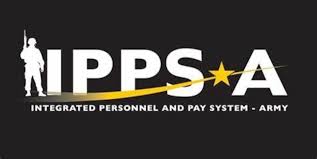More than 15,000 Louisiana Guardsmen & family members benefit since 2008
By 1st Sgt. Paul Meeker, LANG Reintegration Office
NEW ORLEANS – In March 2014, the Louisiana National Guard will host its 29th Yellow Ribbon Reintegration training event on behalf of its Army and Air Guardsmen and family members who are involved in the current overseas deployment cycle.
These 900-plus participants will join more than 1.1 million Guardsmen and family members nationwide who have attended Yellow Ribbon events across the country since the program’s inception in January 2008.
According to the director of the LANG Reintegration Office, Lt. Col. Ed Bush, who oversees the Yellow Ribbon Reintegration Program (YRRP), the purpose of this DOD mandated training is three-fold.
First is to provide Guardsmen and their family members who are in the deployment cycle required training in a professional learning atmosphere. Second is to provide Guardsmen and their family members access to individuals representing agencies and resources who offer critical services related to benefits, employment, health and education. Third is to honor Guardsmen and their family members for their sacrifice and service to their communities, state and nation.
The LANG’s first Yellow Ribbon event occurred in 2008 for approximately 180 Guardsmen and 100 family members who were in the post-deployment phase following overseas deployments in support of Operation Enduring Freedom in Afghanistan and Guantanamo Bay, Cuba. Since then, approximately 15,000 LANG Guardsmen and family members have attended at least one Yellow Ribbon training event.
In the early years of the LANG YRRP, participants attended separate events according to their particular phase of deployment: pre-deployment, during deployment (in which case family members were the participants) or post-deployment. Although these events were held in the relaxed atmosphere of community hotel or conference facilities, they were focused primarily on DOD mandated training in the areas of health care, education & training and financial & legal benefits.
After the first few years of YR training events nationwide, feedback from participant surveys and program after-action reviews suggested that changes were needed to make events more relevant and enjoyable for all participants regardless of their phase of deployment.
Janet Salotti, chief of the YRRP at the National Guard Bureau, said as much in an article published in the August 2013 National Guard magazine.
“When we started, it [the Yellow Ribbon Reintegration program] served its purpose, and it still serves its purpose. But it still needs to be refined a bit,” said Salotti.
Bush and the program manager of Louisiana’s YRRP, Capt. Rebekah Andersen, took this feedback to heart and did more than just refine LANG’s program – they restructured it.
Andersen, also interviewed in the August 2013 National Guard magazine article, said that feedback from participants and her staff indicated that Guardsmen and families wanted to learn more about coping with the tough issues that confront families while their loves ones are deployed.
“All those little things that go wrong when a family member is away can become big deals,” said Andersen.
In November 2012, the LANG Yellow Ribbon program began hosting consolidated, multi-track/multi-phase Yellow Ribbon Symposiums that merged all three components of the deployment cycle into a single weekend symposium for joint service members. All required workshops and briefings necessary to satisfy DOD service specific requirements, such as Transition Assistance Advisor program (Army Guard), and Veterans Administration programs, in addition to the standard Yellow Ribbon programs were included.
Another important change, initiated by Maj. Gen. Glenn H. Curtis, adjutant general of the LANG, was the integration of the DOD Strong Bonds chaplains’ program for pre-deploying Guardsmen and their family members within the Yellow Ribbon Symposium weekend curriculum.
According to Chaplain (Capt.) Brian Ray, LANG’s Strong Bonds program manager, the Strong Bonds program was added to the symposium schedule as a response to feedback received from Guardsmen and their family members who had participated in the Strong Bonds post-deployment training.
“Many Guardsmen and spouses commented on the need to train on skills like improving communication, understanding expectations and problem solving before deployments,” Ray said. “They also said that if they had received this type of training prior to deploying, they would not have struggled as much to reconnect with each other and would have had better skills in place to work through tough issues.”
The last significant change to the LANG Yellow Ribbon program occurred at the most recent symposium held in December 2013 when the Air Guard’s Transition Assistance Program was added to the menu of mandatory training.
These changes meant that the LANG could consolidate all events into just four symposiums
held throughout the training year, rather than host multiple, smaller events scattered across the state, to reduce the possibility that key resources and providers would be unevenly distributed due to the number of events, simultaneous scheduling of events and multiple training locations.
Another important change introduced in November 2012 was the addition of “extra-curricular,” non-mandatory offerings such as personal protection, investment strategies, home improvement tips and personal relaxation techniques, to name just a few. These changes allow Guardsmen and their family members, regardless of their branch, or phase in the deployment cycle, to socialize and learn from each other in professional, yet informal instructional environments, said Andersen.
Salotti, who visited a LANG Yellow Ribbon event in New Orleans in March 2011 for more than 4,100 Guardsmen and family members of 256th Infantry Brigade Combat Team, said then that “she leaves events like this (the nation’s largest Yellow Ribbon event to date) with a short- and a long-term takeaway.”
“The short-term benefit of reintegration training is that Soldiers learn that they’re not alone. The long-term benefit is that they are learning that there are resources available to help them deal with any issues they may encounter as a result of their deployment,” Salotti said.
At the LANG’s most recent Yellow Ribbon Training Symposium in December 2013, Bush offered four pieces of advice to the participants in his opening remarks: Have fun. Learn something new. Talk to one another. Don’t be afraid to ask for help.
“In the military we say ‘I got it,’ because that’s what we do. We pack our stuff, and we go do the mission,” said Bush. “We kiss our spouse and say we’ll be back in a year, and they say, ‘I got it,’ … but sometimes we don’t get it.”
Bush went on to explain that it’s sometimes very difficult for Guardsmen or their family members to say that they need some help. “This is a huge part of what Yellow Ribbon is all about.”
LANG’s restructuring of its Yellow Ribbon Reintegration program, encouraged and approved by the NGB and the DOD, has attracted the interest of other states and entities now revising their programs. Since the LANG Yellow Ribbon program’s restructuring, representatives of Yellow
Ribbon programs from Alaska, Nebraska, California, Kansas, Mississippi and the Army Reserve have visited with the LANG’s Yellow Ribbon staff and attended LANG Yellow Ribbon events.






